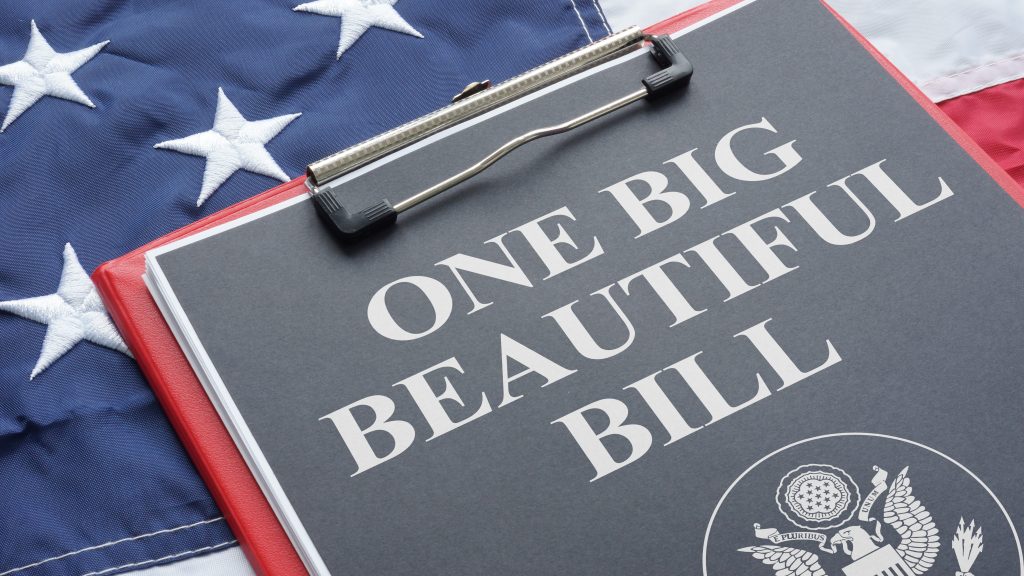The sweeping One Big Beautiful Bill Act (OBBBA), signed into law by President Donald Trump on July 4, touches nearly every facet of American life from health care to tax policy.
For the housing industry, OBBBA represents several major wins—the expansion of the low-income housing tax credit (LIHTC)—and losses, such as the elimination of several energy tax credits.
“This legislation will help spur economic growth and allow our members to invest more resources in multifamily rental construction, land development to build more single-family homes, and new equipment to expand their businesses,” says National Association of Home Builders (NAHB) chairman Buddy Hughes. “In turn, this will create a better business climate that allows builders to increase the nation’s housing supply, which is crucial to help ease America’s housing affordability crisis.”
Low-Income Housing Tax Credit
The affordable housing industry will now see the largest investment in the LIHTCs program in decades as part of the OBBBA. The legislation calls for a permanent 12% credit allocation increase beginning in 2026 and permanently lowering the bond financing threshold test from 50% to 25% for 4% LIHTC developments.
“Housing affordability remains one of the defining issues of our time,” Greg Brown, senior vice president of government affairs for the National Apartment Association (NAA), said following the passage of the bill. “Across communities nationwide, longstanding housing challenges demand action by lawmakers—and this year, that opportunity included federal tax policy.”
David Dworkin, president and CEO of the National Housing Conference, calls the bill’s provisions “the most consequential and positive housing legislation in decades.” Jim Tobin, CEO of the NAHB, says the expansion of the LIHTCs was one of the biggest wins on the business side included in the OBBBA.
“We’ve been pushing for enhancements to the low-income housing tax credit as well as more credit moving into that space,” Tobin said during the NAHB’s podcast Housing Developments. “It’s oversubscribed every year. It is the single best program in American history for building affordable rental housing in this country.”
“[This] is going to add hundreds of thousands of new affordable rental housing [units] in the marketplace for those that need it most. They can build equity and hopefully move into ownership down the road,” Tobin continued.
The OBBBA will also permanently extend the New Markets Tax Credit, with $5 billion in annual allocation authority, and permanently renew the Opportunity Zone program.
“Strengthening and making Opportunity Zones permanent, especially with its increased emphasis on rural communities, will help spur long-term investment in distressed communities by incentivizing capital to flow into areas that need it most,” the NHC said in its statement following the passage of the OBBBA. “These zones have already begun transforming neighborhoods by supporting local development, job creation, and housing expansion.”
Energy-Efficiency Initiatives
For builders and homeowners looking to build energy-efficient homes, the cuts to energy tax credits are one of the most disappointing developments of the OBBBA. As a result, the termination dates for several federal energy tax incentives have been accelerated. President Trump issued an executive order July 7 directly directing the U.S. Treasury “to strictly enforce the termination of clean electricity production and investment tax credits under sections 45Y and 48E of the Internal Revenue Code for wind and solar facilities.”
The Section 45L New Energy Efficient Home Credit, available to builders of energy-efficient single-family and multifamily homes, is set to terminate for homes acquired after June 30, 2026. Additionally, the Section 48E Clean Electricity Investment Credit—a technology-neutral tax credit for installing energy producing technology that does not emit greenhouse gases—is set to terminate after Dec. 31, 2027, unless construction begins within 12 months of the OBBBA being signed into law.
Other energy tax incentives, including the residential clean energy credit and the energy-efficient home improvement tax credit, are set to expire at the end of 2025.
Tobin notes while many association members are unhappy that the energy tax incentives were removed, there will be future opportunities to advocate for them and such incentives remain a legislative priority to the NAHB.
Individual and Business Tax Provisions
Organizations, such as the NAHB, also applauded the inclusion of several tax-related provisions, including:
- Making the key provisions of the Tax Cuts and Job Act permanent, which blocks a $4 trillion tax increase set to take effect next year.
- The estate tax exemption will increase to $15 million.
- The 100% bonus depreciation for businesses will be restored and made permanent.
- The Section 199A Qualified Business Income Deduction, which helps provide tax parity for pass-through entities, will be made permanent at 20%.
- Section 179 business expensing limits will be increased for small businesses.
- The Section 460(e) Completed Contract rules will be expanded to include condos in addition to single-family homes. This provision ensures builders are not taxed on deposits paid by a buyer during the construction of a single-family home and condo, but rather the home is taxed when sold.



